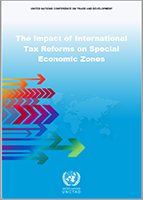
International tax standards are currently undergoing the most significant reform undertaken in the last 100 years, and investment policymakers, including special economic zone (SEZ) authorities and managers, now need to pay close attention to the impact this will have on investment promotion.
Among the key reform proposals, the members of the OECD/G-20 Inclusive Framework on Base Erosion and Profit Shifting have agreed on the implementation of a global minimum tax applicable to certain multinational enterprises (MNEs) earning more than €750 million annually.
The Global Anti-Base Erosion (GloBE) rules will limit the use of corporate income tax (CIT) incentives by requiring that foreign affiliates of affected MNEs pay a minimum effective tax of 15 per cent on their profits in all the jurisdictions in which they operate.
This reform is expected to dissuade MNEs from shifting profits and tax revenues to low-tax jurisdictions and thus slow the current race to the bottom in CIT between countries, particularly developing ones.
This reform is the culmination of decades of multilateral effort to regulate harmful tax competition and profit shifting, under the auspices of the OECD and the G20. It is not the first set of standards to have an impact on investment incentives adopted in SEZs.
Indeed, some SEZs have already fallen within the scope of the evaluation of preferential tax regimes undertaken by the Forum on Harmful Tax Practices to determine whether and to what extent they are harmful.
Given the substantial impact that international tax standards can and have had, it is crucial that SEZ authorities and regulators and the policymakers develop an understanding of the way in which international tax standards affect their investment promotion efforts.
This note aims to provide an overview of the features of the international tax arena that affect SEZs and provide some recommendations for policymakers who are managing and designing zones under growing regulatory constraints.




